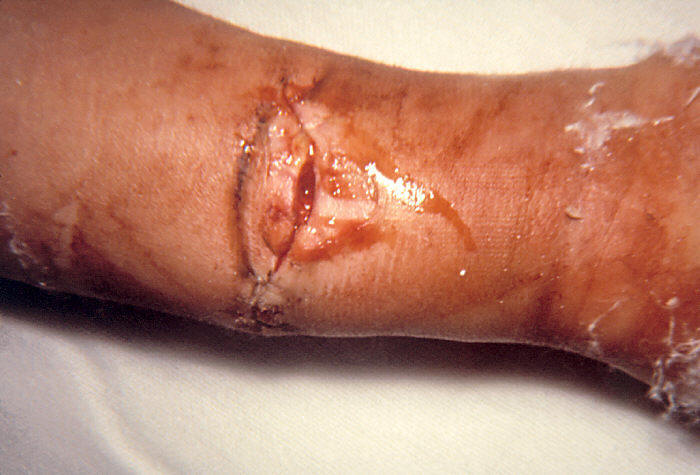Clostridium botulinum is a bacillus (rod-shaped) bacteria. The C. botulinum spores resist heat which is how they survive in improperly canned foods. The bacteria is usually found in soil and low-oxygenated areas.
Clostridium botulinum is a bad bacteria that causes muscle paralysis. C. botulinum causes a disease called Botulism. Botulism is a rare but serious disease that leaves few survivors. There are three main types of Botulism: infant botulism, foodborne botulism, and wound botulism.
Infant Botulism is caused by ingesting C. botulinum spores which begin to grow in our intestines while producing toxins. Infant Botulism is mainly found in children three months old or younger. C. botulinum spores are mainly found in the environment and bee honey. The infant mortality rate of Botulism is less than 1%. There are about 154 cases of Botulism, in the US, each year; about 75% of the cases are in infants, or 71 children are infected with it.
Foodborne Botulism happens when C. botulinum produces toxins in home-made or improperly canned goods. There are about 24 foodborne botulism cases in the USA with a 5-10% mortality rate.

Wound Botulism is when C. botulinum spores enter open wounds. This happens because the bacteria can survive in "soil and marine sediment." Wound botulism is very rare, there are only 3 cases of it in the US per year. However, it has a 15-17% mortality rate.
The reason clostridium botulinum causes muscle paralysis is because the bacteria produces neurotoxins (a toxin that affects nerve cells). In botulism the bacteria starts by first paralyzing the muscles in the face, and will later spread to paralyze the limbs. In severe cases of Botulism the bacteria can paralyze the breathing muscles causing respiratory failure. That is how people die from the infection.
Some of the symptoms of Botulism are:
Source of photo + more information on Botulism
More Information on Botulism
Sources:
http://www.fda.gov/food/foodsafety/foodborneillness/foodborneillnessfoodbornepathogensnaturaltoxins/badbugbook/ucm070000.htm
http://en.wikipedia.org/wiki/Clostridium_botulinum
http://bioweb.uwlax.edu/bio203/s2008/strandwi_phil/images/wound_botulism.jpg
http://www.roanoke.com/news/images/1115_botulism_400x265.gif
http://activerain.com/image_store/uploads/5/6/2/4/2/ar119481994124265.JPG
.jpg)


Great info on the effects of botulism. Do you know anymore specifics about the structure of the bacteria? Does is aid in function at all?
ReplyDeleteAs you can see from the picture above, Clostridium botulinum has flagella attached to it; it also forms endospores. I don't know any other specifics about the structure of the bacteria. I do know that it is a anaerobic (needs little oxygen) spore-former, which is why they can survive for so long and strike when least expected.
ReplyDelete